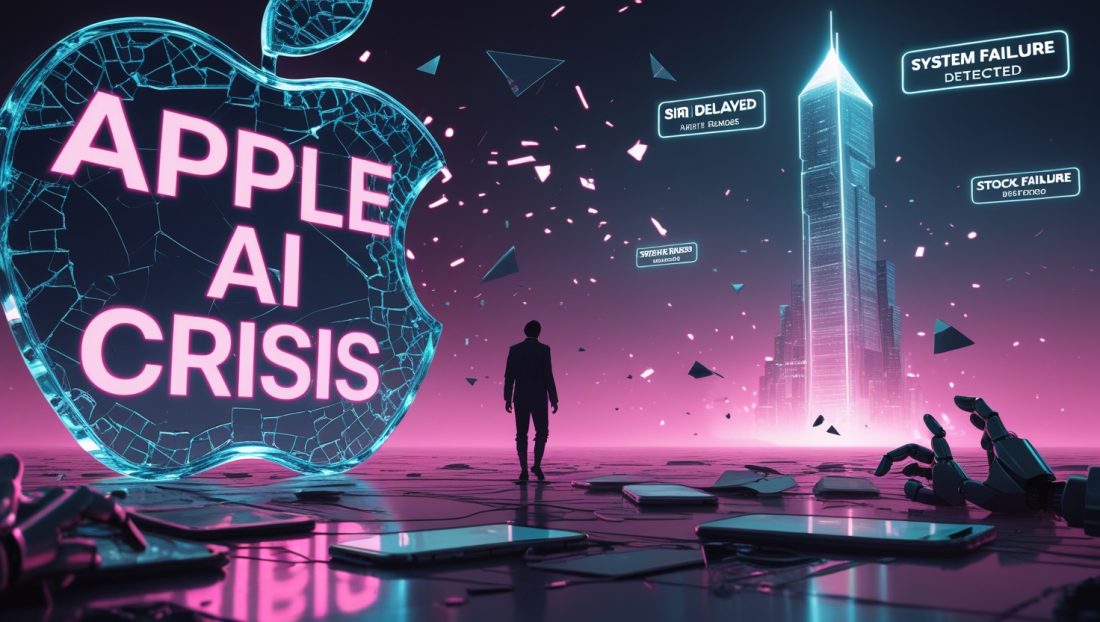The Breaking Point
On July 10, 2025, the Apple AI crisis reached a seismic turning point when Ruoming Pang—architect of its core AI models—defected to Meta alongside key collaborators. Insiders described the fallout as an “earthquake inside Apple,” exposing deep fractures in its AI strategy amid a widening talent exodus to OpenAI, Anthropic, and Google. The Apple AI crisis now threatens the company’s iPhone dominance and its $3 trillion market value as rivals accelerate. For a deeper look at how talent shifts are reshaping global tech, explore why a former Apple engineer’s return to China signals a new chapter in the tech war.
1. The Pang Exit: Why Losing One Star Sparked Chaos
A. The Indispensable Architect
Pang wasn’t just another executive. Hired from Google DeepMind in 2021, he pioneered Apple’s on-device AI technology—a cornerstone of its privacy-focused strategy. His work enabled large language models (LLMs) to run efficiently on iPhones without cloud dependency. His sudden departure triggered a leadership vacuum no successor could immediately fill.
B. Internal Civil War
Months before resigning, Pang pushed to open-source Apple’s AI models to attract external collaboration. Software chief Craig Federighi blocked the move, fearing it would reveal performance compromises in iPhone hardware. This clash epitomized a deeper rift: research innovation (led by AI head John Giannandrea) versus product pragmatism (controlled by Federighi). For insights into why open-sourcing AI can drive innovation, check out why DeepSeek’s source code release is a game-changer for open-source AI.
C. Talent Domino Effect
Pang’s exit ignited a chain reaction:
- Top researchers followed him to Meta or joined OpenAI/Anthropic.
- Morale plummeted as Apple tested Google’s Gemini to power Siri—a tacit admission its models lagged.
“Children cannot choose the planet they live on. It’s our duty to leave them the best possible environment,” said an Apple researcher on the fragility of talent ecosystems. This sentiment echoes broader concerns about retaining AI talent, as discussed in AI career pathing solves the silent talent crisis.
2. Inside the Apple AI Crisis: Siri Delays and Strategic Stumbles
A. Siri’s “Spring 2026” Mirage
Apple’s next-gen Siri—promised for 2024—is now delayed until at least spring 2026. Engineering teams blame marketing for “overhyping” unready features, while leadership debates outsourcing AI to OpenAI. The vacuum empowered rivals: Samsung now bundles Perplexity AI on Galaxy devices. For a comparison of AI platforms like Perplexity outperforming others, see why Perplexity AI outshines Grok 3, Gemini, ChatGPT, and DeepSeek in deep research.
B. WWDC 2025: Style Over Substance
June’s keynote unveiled flashy “Liquid Glass” UI designs but offered zero breakthrough AI features. Analysts noted Apple Intelligence tools (photo editing, text summaries) remained years behind Google’s agentic AI that books flights or negotiates returns. As Deepwater Asset’s Gene Munster lamented: “It’s clearer how far behind they are.” To understand how agentic AI is transforming industries, visit agentic AI: the rise of autonomous decision-making.
C. The Hardware Trap
Apple’s obsession with on-device processing created technical barriers. A damning study found its AI models suffered “complete accuracy collapse” when solving complex puzzles like Tower of Hanoi. Even with algorithms provided, models “reduced reasoning effort” as difficulty increased—a fundamental scalability flaw. For more on how hardware limitations impact AI, read this analysis from TechCrunch on Apple’s AI challenges.
3. Industrial AI Analysis: Why Apple’s Model Is Faltering
A. The Talent War Mismatch
- Meta/OpenAI: Offer $100M+ packages and publish cutting-edge research.
- Apple: Restricts open-source contributions and prioritizes product integration. Result: “Researchers feel their work dies in a black box,” notes ex-Apple engineer Ray Wong.
B. The Compute Disadvantage
While Sam Altman plans a 100 million GPU infrastructure (75% of the UK’s power grid), Apple’s focus on device-level efficiency limits model scale. Training GPT-5 requires data centers—not just iPhones. Learn more about the infrastructure race in CNBC’s coverage of OpenAI’s massive compute investments.
C. Leadership Paralysis
Post-Steve Jobs, Apple perfected incrementalism—watches, cameras, thinner phones. But AI demands radical bets. As ex-designer Jony Ive partners with Altman on AI hardware, Apple’s caution looks increasingly dangerous.
4. Market Fallout: Stock Slumps and “Loser” Labels
Apple shares fell 15% in 2025 as rivals like Nvidia soared. Wedbush’s Dan Ives warned: “Apple is at a highway rest stop watching the 4th Industrial Revolution race go by at 100 mph.” Axios bluntly called it a “loser” in the AI gold rush.
The Talent Drain Impact
| Metric | Pre-Crisis (2024) | Post-Pang (2025) |
|---|---|---|
| AI Researcher Retention | 89% | 62% |
| Siri Launch Timeline | Q4 2024 | Q2 2026 (est.) |
| Stock Performance | +8% YTD | -15% YTD |
5. Survival Strategies: Can Apple Recover?
A. Acquisition Panic Button
Analysts urge buying Perplexity AI ($30B) to inject Siri with modern AI. Yet culture clashes loom—Apple has historically failed to integrate big-ticket acquisitions.
B. The Ecosystem Advantage
With 1.5B active devices, Apple can still win via distribution. As Creative Strategies’ Carolina Milanesi notes: “Siri knows me because my phone is an iPhone. Alexa doesn’t leave my home.”
C. Pragmatic Partnerships
Leasing OpenAI/Google models for Siri could buy time to rebuild in-house tech—a move akin to Microsoft using Android in early smartphones. “Anybody who thinks LLMs are a direct route to AGI is kidding themselves,” said AI skeptic Gary Marcus on Apple’s research.
The 24-Month Ultimatum
Apple’s AI crisis is a leadership failure, not a tech deficit. Without talent or vision, it risks an “AOL moment”—irrelevance in the AI era. The clock is ticking: 24–36 months to ship transformative AI or cede the ecosystem to rivals. For investors and users, the “earthquake” is a wake-up call: Apple must choose between evolution and extinction.
Evergreen Takeaways
- Talent > Tech: AI wars are won by cultures empowering researchers, not isolating them.
- Hardware Isn’t Enough: On-device AI must complement—not replace—cloud-scale compute.
